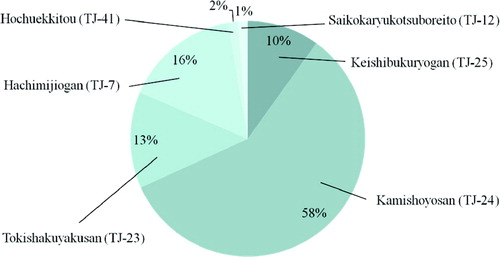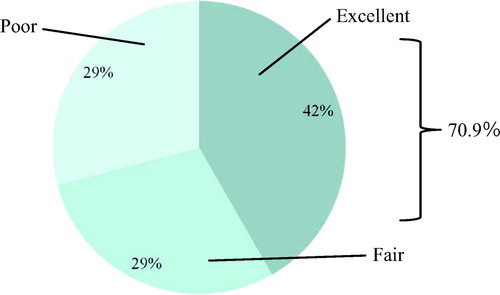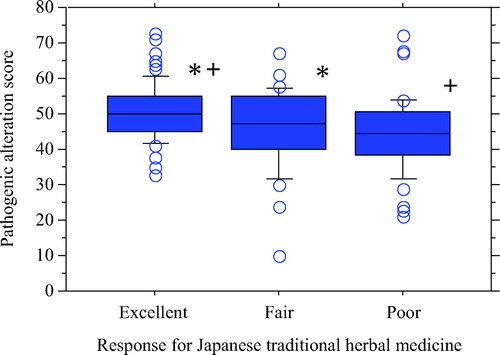Figures & data
Table I. The excess (Shi/Jitsu)−insufficiency (Xu/Kyo) scoring system questionnaire for decisions regarding patient's pathogenic alteration.
Table II. Composition of the six Japanese traditional herbal medicines for LOH treatment.
Table III. Index for the selection of Japanese traditional herbal medicine corresponding to the conditions of patients with LOH.
Table IV. SMI for evaluation of LOH symptom severity.
Table V. The pre-treatment values of several parameters obtained from 151 patients with LOH, such as age, pathogenic alternation score, SMI, IIEF 5, AMS total and free testerone levels and IPSS were indicated.
Figure 1. The rate of Japanese traditional herbal medicine administration. More than half of patients with LOH received Kamishoyosan (TJ-24), followed by Hachimijiogan (TJ-7) and Tokishakuyakusan (TJ-23).

Figure 2. The mean score of SMI of patients with LOH decreased significantly four weeks after Japanese traditional herbal medicine administration. (*p < 0.0001; Student t test).

Figure 3. The efficacy of Japanese traditional herbal medicine for LOH was 41.8, 29.1, and 29.1% in the Excellent, Fair, and Poor response groups, respectively. Accordingly, 70.9% of patients with LOH treated with Japanese traditional herbal medicine experienced favorable effects.

Table VI. The efficacy rate of Kampo for 151 patients with LOH according to their pathogenic alteration.
Table VII. The efficacy rate of six Japanese traditional herbal medicines (Kampo) for 151 patients with LOH.

